First impressions are everything, especially in home buying. A gorgeous exterior vs. a crummy one decides whether you walk in the front door. Inside, spotless interiors are more likely to inspire a life there than a cluttered house that’s clearly, well, someone else’s home.
And while this is where staging can play a huge role, it’s the listing pictures buyers see online that is often the first barrier of entry. So they better be really good.
In fact, a 2013 Redfin study found that homes professionally photographed with high-performance Digital Single-Lens Reflex (DSLR) sold quicker and for thousands of dollars, more than homes shot with amateur photos. DSLR cameras are also the preferred camera of Redin’s national photography manager, Drew Larrigan. Redfin provides professional photography to all its listing clients, free of charge.
Why Professional Real Estate Photos Sell Homes for More
“The iPhone is the number one camera on the market right now, but we are still very far from it replacing a DSLR, which offers a higher quality image with higher pixelation. It’s the level necessary in this business, that will be continued to be used in the market for years to come.”
But you need more than just a fancy high-tech camera, you also need the know-how.
“The number one thing people get wrong with listing photography is having the mindset that anyone can do it and deliver a beautiful photo,” he said. “There is a lot of behind-the-scenes work you don’t see, capturing layers of High Dynamic Range (HDR) images to create one beautiful shot.”
Layers, he explained refers to multiple exposures. “This allows us to highlight shadows and bring out brightness or darkness through the windows. And then you stack those layers, which creates the beautiful windows in our photos.”
As online searching and browsing is a critical part of the home-buying process, it makes sense that professional photos will entice people to visit the home as they know what they are getting before they even set foot in the home.
“Today we have more shoppers buying from abroad or out of state and making an offer sight unseen, and really want to see a home documented,” Drew said. “They want to see every corner of the home, and that’s the beauty of the DSLR is offering a resolution that allows the out of state or city buyer a chance to see the home in full.”
Amateur vs. Professional Real Estate Photos
To see these differences in action, Drew shared listing photos comparing those shot by an amateur, and those professionally photographed. “These examples are a chance to really look at the data visually, of the difference between a team approach that builds out quality, versus independent third parties,” he said. “It goes to show how important it is for Redfin to offer quality to the client, and how important it is to make sure our listings are as beautiful as possible.”
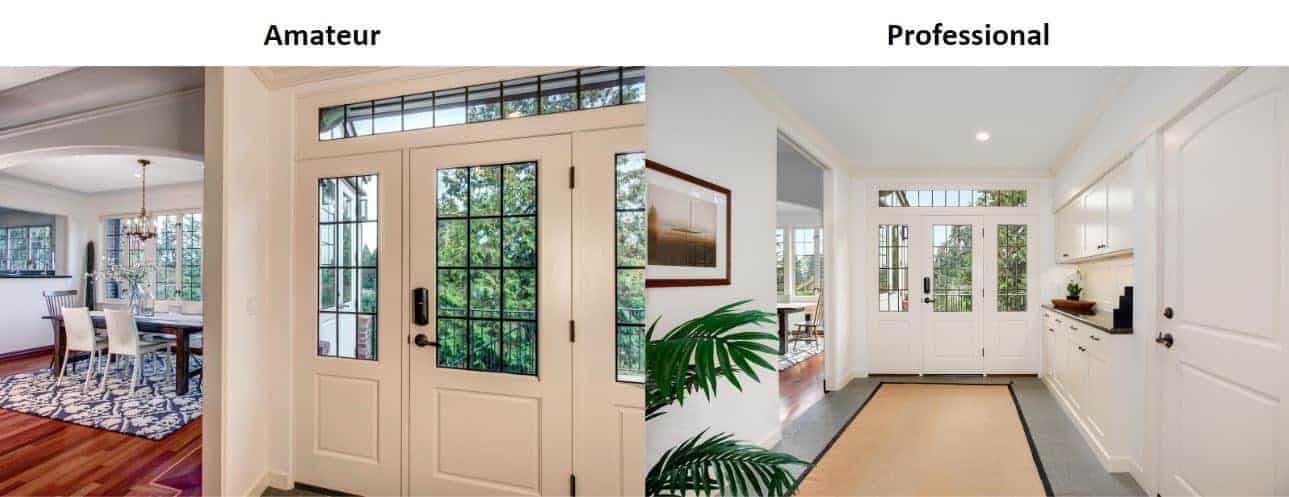
“In the above photo to the left, the photographer attempts to connect the front door with the dining area, but in the process, misses all the wonderful entry storage, and the white walls look brown. Redfin’s professional photo on the right chose to instead focus on the expansive hallway, beautiful entry, great storage, and crisp color tones. The professional photographer fully utilizes this space and frames key assets in the hallway.”
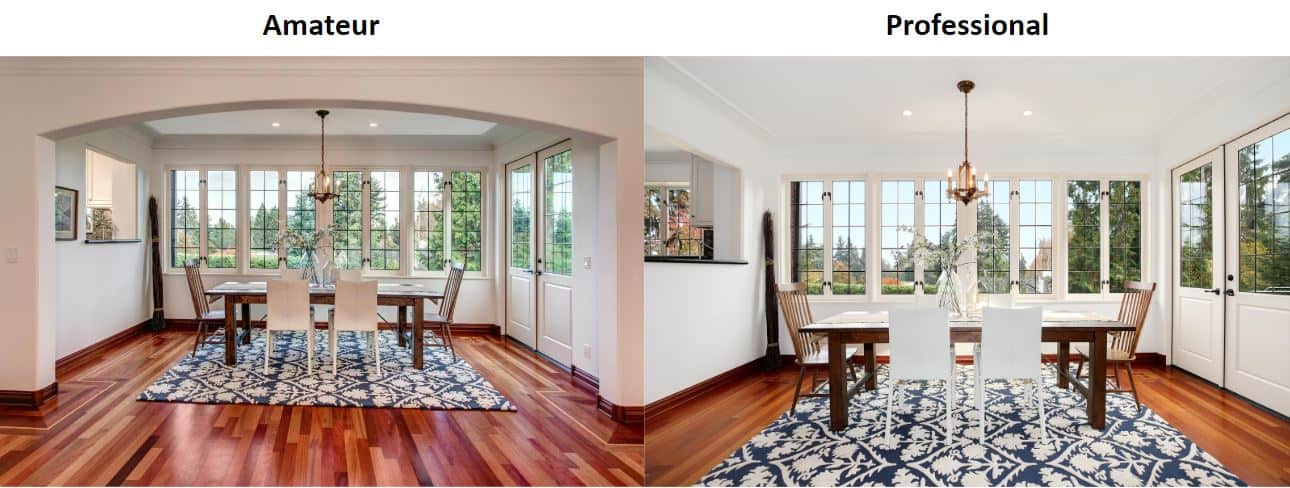
“In the professionally shot photo above on the right, the color tones, wood tones, and white balance are perfect. The walls are WHITE. The frame orientation is centered around the chandelier and the photo invites you into this room. In contrast, in the other photo, the room appears to be leaning, the white balance is off, and the colors are dark, almost reddish.”
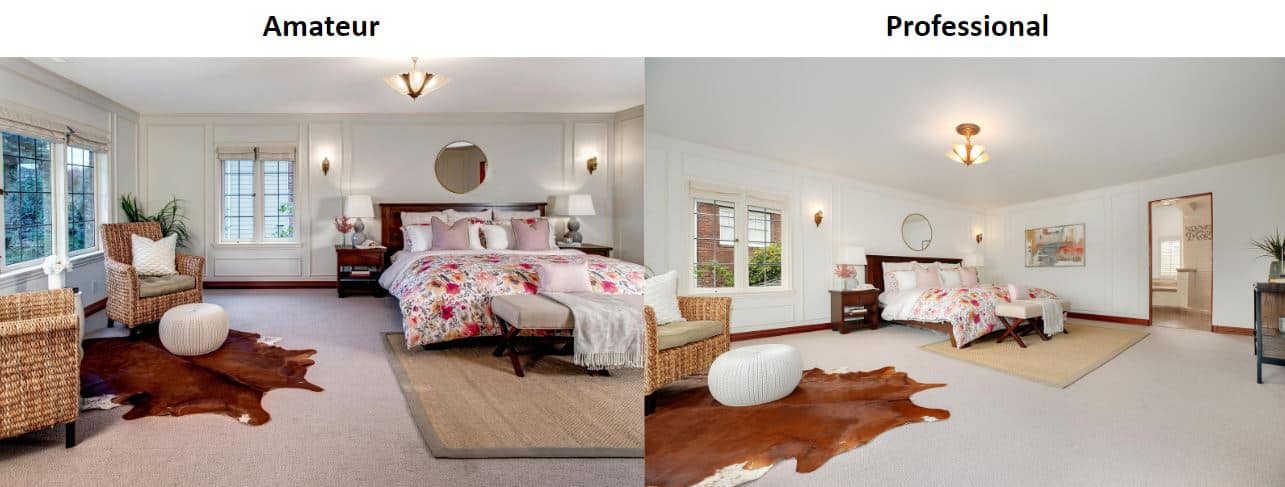
“Once again, a proper color balance comes into play here. When incorrect, the master bedroom feel small. It also misses an opportunity to show the adjoining bathroom. The composition should highlight the full room to its entirety.”
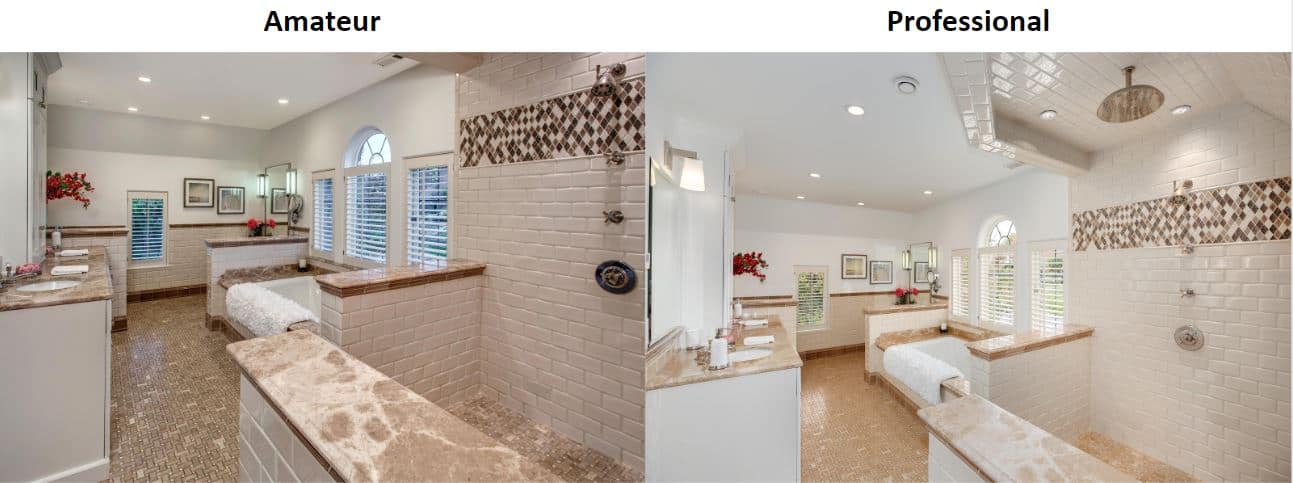
“This bathroom is bright and light but the white balance is off, and as a result, the images miss key features like the upscale shower head, vanity and lighting.”
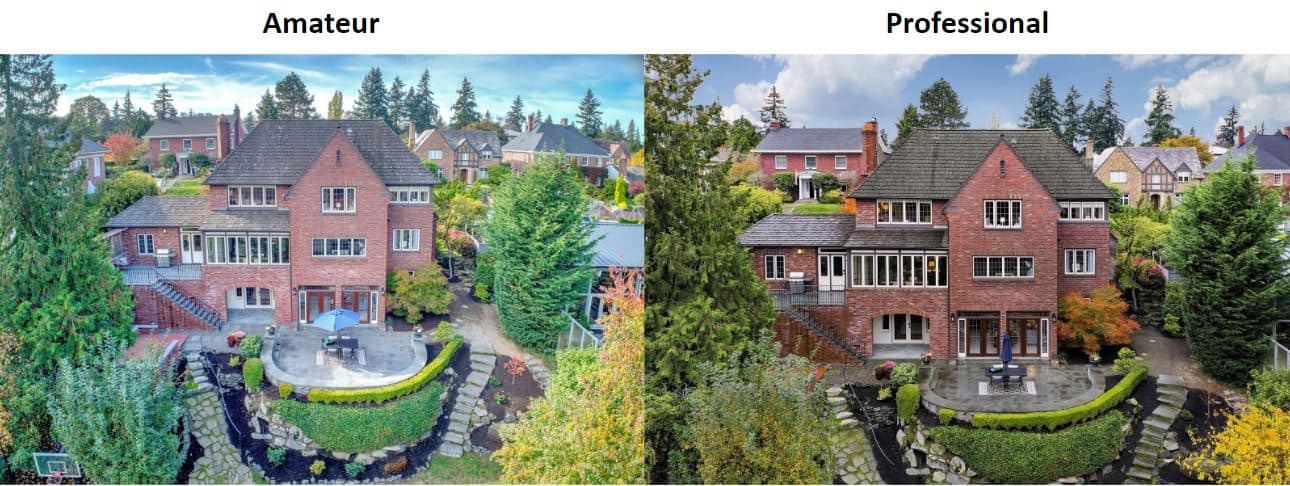
“In the first photo, your eye is drawn to other objects, rather than the house itself. The basketball hoop, open umbrella, neighbors to the left and right are distracting and more obvious. Additionally, the home isn’t centered, and the lens distortion bends the horizon line. When photographed correctly, you will notice the sky and the framing. This is a shot that is composed, center and square. The color tones are natural and the backyard feels private.”
Homes professionally photographed with DSLR cameras are proven to sell quicker and for thousands of dollars more than homes shot with amateur photos.
Inspired by Drew’s insight, we took a look back at the 2013 study. The data revealed that professionally photographed homes priced in the $400,000 range sold three weeks faster and for more than $10,000 relative to their list price, than their counterparts with amateur photos.
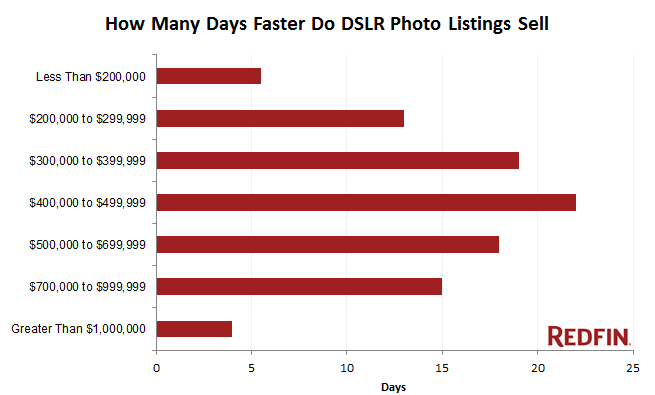
The 2013 findings also found that homes listed between $200,000 and $1 million sold for $3,400 to $11,200 more relative to their list prices when photographed professionally with a DSLR camera. At the high end of the spectrum, professionally photographed homes for more than $1 million sold at prices similar to those with amateur photographs.
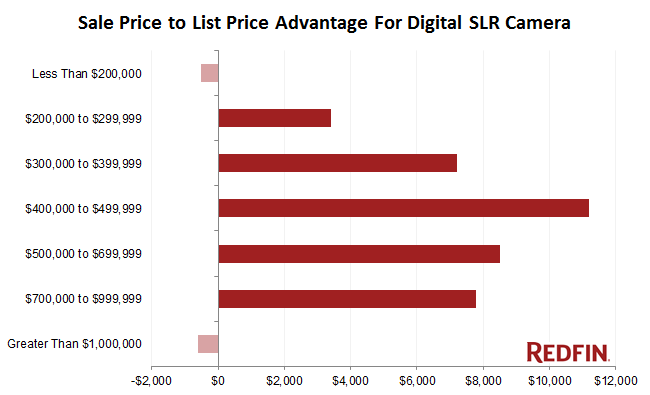
Additionally, The 2013 findings also looked at photo sharpness, or, the detail added to a picture by using a good camera, lens and lighting. Whether a crisp reflection, or bright flowers, a sharper picture will show a house in its best light. The sharpest 10 percent of photos sold at or above list price 44 percent of the time, while listings with average sharpness sold at or above list just 13 percent of the time.
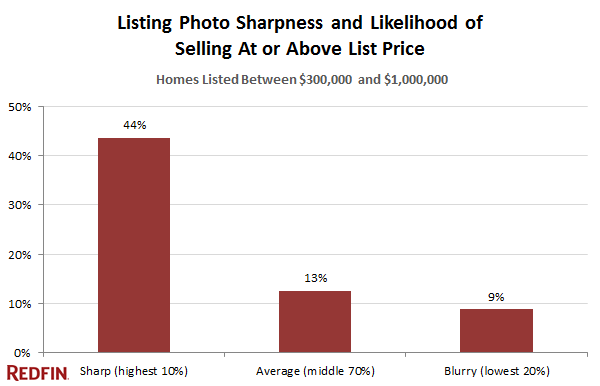
Ready to professionally photograph your home to list? Make sure you’ve completed these 10 steps first.
This post first appeared on Redfin.com. To see the original, click here.


